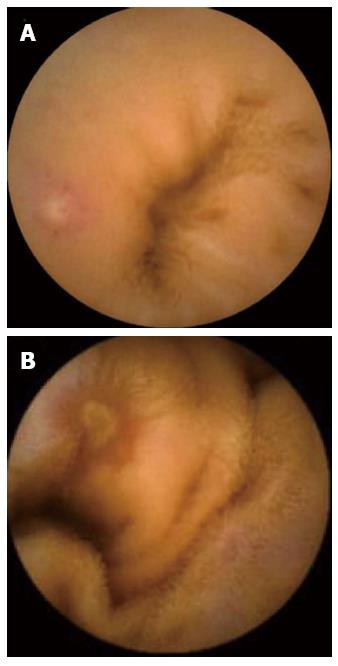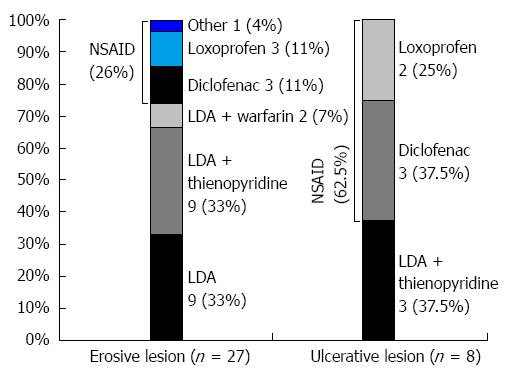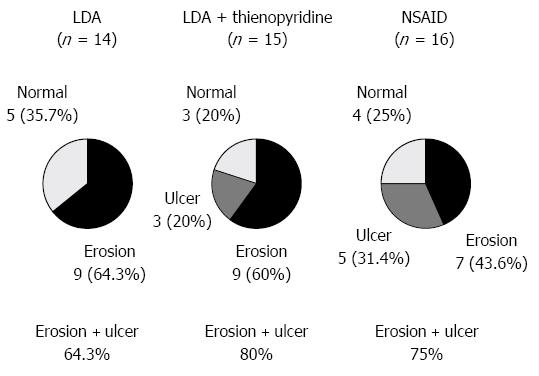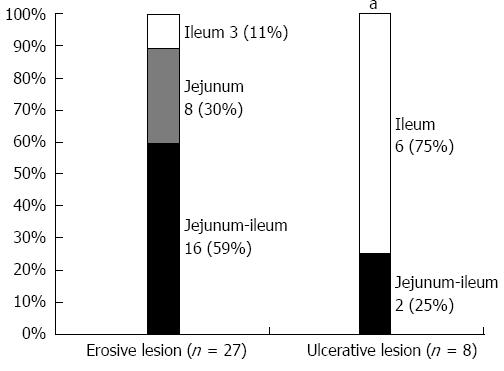Copyright
©2014 Baishideng Publishing Group Inc.
World J Gastroenterol. Sep 28, 2014; 20(36): 13133-13138
Published online Sep 28, 2014. doi: 10.3748/wjg.v20.i36.13133
Published online Sep 28, 2014. doi: 10.3748/wjg.v20.i36.13133
Figure 1 Endoscopy.
A: Endoscopic finding of erosion (a small erosion was defined as a circumscribed area of mucosal disruption denuded of villi with or without exudates or red color with a diameter equivalent to a valvulae conniventes); B: Endoscopic finding of ulcer (ulcers were defined as a large erosion with a central area with exudates).
Figure 2 Proportion of types of non-steroidal anti-inflammatory drugs in the ulcerative or erosive lesions of the small intestine in obscure gastrointestinal bleeding cases.
NSAID: Non-steroidal anti-inflammatory drug; LDA: Low-dose aspirin.
Figure 3 Prevalence of ulcerative or erosive lesions in chronic non-steroidal anti-inflammatory drug and low-dose aspirin users.
NSAID: Non-steroidal anti-inflammatory drug; LDA: Low-dose aspirin.
Figure 4 Location of ulcerative or erosive lesions of the small intestine in obscure gastrointestinal bleeding cases.
aP < 0.05 vs erosive lesions.
- Citation: Iwamoto J, Mizokami Y, Saito Y, Shimokobe K, Honda A, Ikegami T, Matsuzaki Y. Small-bowel mucosal injuries in low-dose aspirin users with obscure gastrointestinal bleeding. World J Gastroenterol 2014; 20(36): 13133-13138
- URL: https://www.wjgnet.com/1007-9327/full/v20/i36/13133.htm
- DOI: https://dx.doi.org/10.3748/wjg.v20.i36.13133












